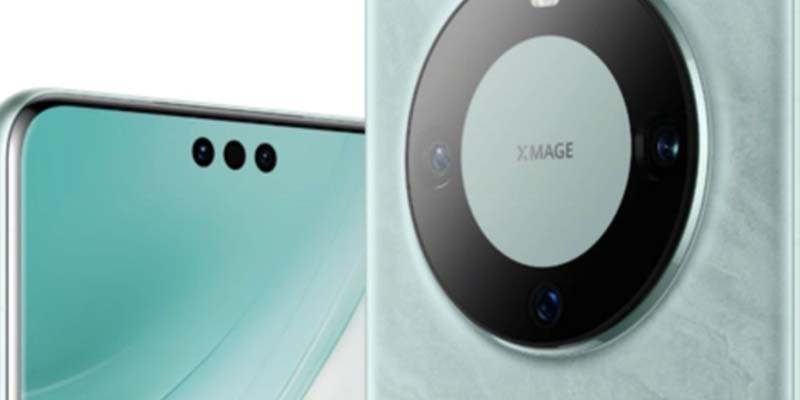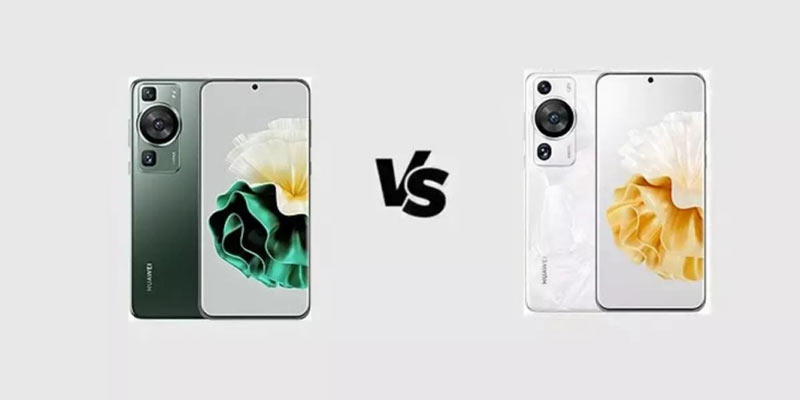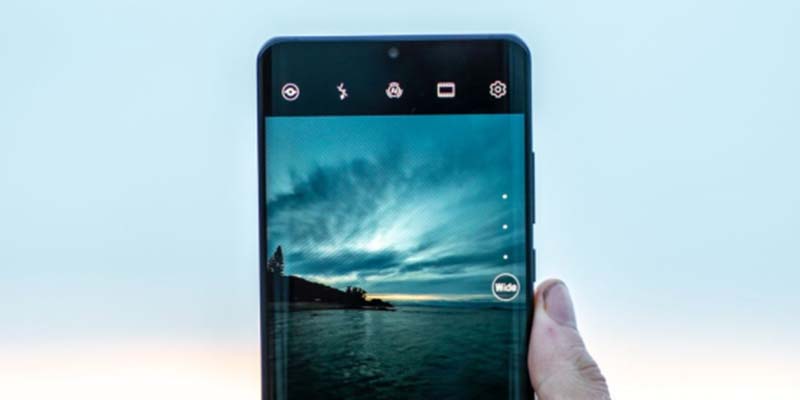In a world where communication has become an integral part of our lives, satellite calling is an advancement that must not be underrated. This technology offers global connectivity, even in remote areas where traditional cellular networks may be absent. But, most modern phones have abandoned this technology for cellular networks. So, it would be astonishing to find out that the Huawei Mate 60 Pro, released in August 2023, has become the world’s first smartphone to feature satellite calling.
Here, we will explore satellite calling and how it differs from regular calls. We will also discuss whether the Huawei Mate 60 Pro can use this feature in the United States, in addition to its compatibility with iPhones.
What is satellite calling?
Satellite calling, or satellite communication, represents a remarkable advancement in telecommunications. At its core, satellite calling hinges on strategically positioning communication satellites in Earth’s orbit. These satellites connect users with one another and enable seamless transmission of voice and data signals. Unlike conventional mobile networks, which rely on a network of cell towers situated on land, satellite calling leverages the vast space to bridge the gap between callers, regardless of their geographical locations. This unique approach to communication has several key attributes that set it apart from regular calling.

Global Coverage
Satellite calling offers unparalleled global coverage. Regardless of where an individual or a group of users may find themselves on Earth, they need not be worried. Satellite technology provides the means to establish communication. This universal coverage extends to regions that dont have any cell towers. Remote and isolated areas, such as deserts, mountains, jungles, or polar regions, benefit significantly from satellite calling capabilities.
Reliability in Remote Areas
Satellite communication systems are renowned for their reliability in remote and challenging environments. Satellite systems are less prone to be affected by interference, damage, or congestion. This reliability makes satellite calling a lifeline for industries like maritime, aviation, and emergency services. It is also heavily relied on by adventurous travelers and remote workers operating in areas beyond the reach of regular networks.
Accessibility in the Open Sea
Satellite calling extends its reach to the open sea. It enables communication for maritime activities such as shipping, fishing, and maritime emergencies. This is especially critical in the vast expanses of the ocean, where terrestrial networks cannot provide cellular coverage.
What is the difference between satellite calls and regular calls?
Due to the different modes of transmission and equipment, there are many significant differences between satellite calls and regular calls. The most prominent ones are,
Coverage
The most significant difference between satellite calls and regular calls is the coverage area. Regular calls rely on terrestrial cell towers, and if you’re out of range of these towers, you won’t have signal reception. In contrast, satellite calls can be made virtually anywhere on Earth, as long as you have a clear line of sight to the satellite.
Reliability
Satellite calls are often more reliable in extreme conditions. Traditional cell networks can be affected by weather, natural disasters, and high network traffic. Cellular calls, on the other hand, are less likely to be affected by such disruptions.
Cost
Satellite calls are generally more expensive than regular calls due to the high cost of satellite communication infrastructure. Maintaining and launching communication satellites into space is a significant investment. These satellites need to be equipped with advanced technology and maintained in orbit. Additionally, the ground stations that link satellite signals to land networks are expensive to operate and maintain. As a result, satellite phones often have higher rates per minute compared to traditional mobile plans.
Lag
When you make a regular call using a cellular network, the signal travels through cell towers, which are relatively close in proximity. In contrast, satellite calls involve sending the signal up to a satellite in orbit and then back down to the recipient’s location. This round trip introduces a noticeable delay, which is commonly referred to as “latency.”
Equipment
Satellite calls require specialized equipment, such as satellite phones. Usually, these phones are purpose-built for satellite communication and equipped with antennas and technology capable of connecting to satellites in orbit. They are often bulkier and more rugged than standard smartphones (until the Huawei Mate 60 Pro). In contrast, regular calls can be made using common smartphones that are widely available and typically more compact and user-friendly.
Does Huawei Mate 60 Pro Support Satellite Calls
Huawei Mate 60 Pro has made a groundbreaking debut as the world’s first smartphone to offer satellite calling capabilities. Huawei Mate 60 Pro users can now seamlessly initiate phone calls with other smartphones via orbiting satellites without needing conventional mobile signal connectivity. Moreover, users can effortlessly place calls to new numbers and receive incoming calls with this innovative feature.

While technical details are unavailable, historical information suggests that the Huawei Mate 60 Pro leverages China’s Tiantong-1 satellite system to enable satellite calling functionality.
What adds an intriguing dimension to this development is that the constraints of signal coverage do not bind these satellites. Thus, the Huawei Mate 60 Pro provides uninterrupted connectivity in diverse locations like mountains, oceans, plateaus, forests, and more.
The technology enabling this remarkable feat relies on Huawei’s utilization of Power Amplifier (PA) chips within the Mate 60 Pro. These chips are pivotal in enhancing signal strength and efficiently managing power consumption. Interestingly, these PA chips are developed domestically, emphasizing Huawei’s commitment to self-sufficiency.
This achievement builds upon Huawei’s prior innovations in satellite communication technology. In the past, the Mate 50 series introduced the first-generation satellite SMS feature, enabling one-way SMS connectivity via satellite. With the Huawei P60 Series, this technology was further refined to support two-way SMS conversations.
Can Huawei Mate 60 Pro use satellite calls in the United States? What is the reason?
The Huawei Mate 60 Pro, equipped with satellite calling capabilities, operates within a unique context that has limited its use in the United States. Several key facts need to be considered to understand why this device may not be accessible in the U.S.
Firstly, this function of the Huawei Mate 60 Pro relies on China Telecom’s network for connectivity. This network primarily covers China, most of Eurasia, and the eastern half of Africa. While it offers reliable satellite calling within these regions, it has not been extended to the United States.
The primary reason for the unavailability of Huawei Mate 60 Pro’s satellite calling feature in the United States is the ban imposed on Huawei devices in the country. This ban is primarily due to security concerns and allegations of Huawei’s close ties with the Chinese government. This has naturally raised national security apprehensions in the U.S. As a result, Huawei phones, including the Mate 60 Pro and its satellite calling feature, are not officially sold or supported in the United States.
Furthermore, as of the time of writing, the Huawei Mate 60 Pro is exclusively available in China. As a result, this restricts users in the United States from obtaining the device and using its satellite calling capabilities.
Can I use satellite calls with my iPhone?
As of now, the iPhone does not have the satellite calling feature. However, there is an exciting development with the iPhone 14, which introduces a new feature called “Emergency SOS via Satellite.”
This feature is designed to provide a text message service for individuals in dire circumstances in remote areas where regular cellular coverage is unavailable. Apple has collaborated with the satellite company Globalstar to provide this service, leveraging Globalstar’s Band 53 spectrum. This satellite SOS service took many years to make possible and involved the creation of revolutionary hardware, software, and infrastructure.
While “Emergency SOS via Satellite” on the iPhone 14 is a valuable addition for emergencies, it’s essential to emphasize that this is not the same as full-fledged satellite calling. This feature remains exclusive to the one offered by the Huawei Mate 60 Pro. It’s primarily designed for sending text messages during emergencies when traditional cellular networks are inaccessible.
Takeaway Point
Satellite calling through the Huawei Mate 60 Pro represents a groundbreaking step forwardthat allows users to contact others in remote or inaccessible regions where traditional cellular networks fall short. However, satellite calling technology remains exclusive to specialized satellite phones, like the Mate 60 Pro.
While Apple’s Emergency SOS Satellite communication system demonstrates its commitment to enhancing emergency communication, it’s important to clarify that this is not a satellite calling solution. Ultimately, many smartphones like Huawei are attempting to incorporate a satellite calling feature, which is a huge step forward in modern communication.




